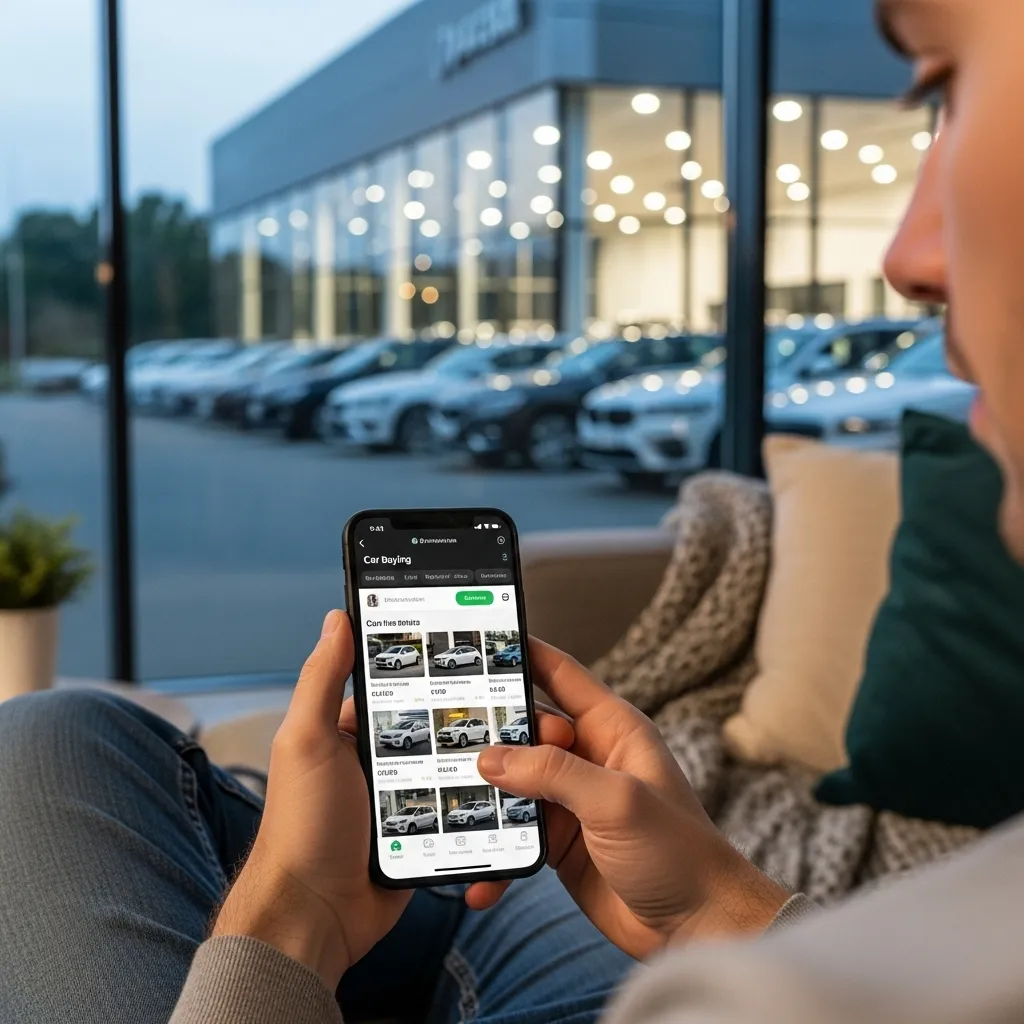The Ultimate Guide to used car buying apps in 2025
In the fast-paced digital era, the way we shop for cars has dramatically changed. Gone are the days when buyers had to spend weekends hopping from one dealership to another, comparing prices and negotiating deals. Today, technology has brought convenience to our fingertips with the rise of used car buying apps. These applications make it easier to browse, compare, and even purchase vehicles without leaving home. In this comprehensive guide, we will explore the best apps available, their features, and how to use them effectively to secure the right deal for your next vehicle.

The Evolution of Car Buying: From Dealerships to Digital Apps
Over the past decade, the automotive marketplace has shifted from traditional dealerships to online platforms. What once required physical visits and face-to-face negotiations can now be accomplished with a smartphone. Used car buying apps are at the forefront of this revolution, offering convenience and transparency that was previously unheard of in the industry.
Buyers today can compare multiple vehicles, check reviews, and access vehicle history reports - all within minutes. The rise of digital tools has not only saved time but has also empowered consumers with more data-driven decision-making capabilities.
Why used car buying apps Are Gaining Popularity
The popularity of used car buying apps is not accidental. They solve several pain points that traditional car buying often presented. The ability to browse thousands of listings in one place, filter by budget, brand, or mileage, and get real-time pricing updates creates a seamless experience for users.
Moreover, apps often integrate financing options, car delivery services, and trade-in calculators, which reduce the need to interact with multiple parties. This all-in-one approach explains why millions of buyers now prefer apps over conventional methods.
Key Benefits
- Access to nationwide or even international listings
- Transparency with vehicle history reports
- Price comparison tools that ensure fair deals
- Convenient communication with sellers
Top used car buying apps in 2025
Several applications dominate the market, each offering unique features to appeal to specific buyer needs. Some apps focus on affordability, while others emphasize certified dealers or luxury cars. Below are some of the most trusted platforms in 2025.
CarGurus
CarGurus is popular for its data-driven algorithm that shows whether a listing is a good deal based on market value. The app provides extensive details about the car’s condition, mileage, and seller ratings, making it one of the most reliable used car buying apps.
AutoTrader
AutoTrader remains a household name in car shopping. With millions of listings, advanced filters, and financing options, it remains one of the best platforms for finding both new and used cars in the U.S.
Carvana
Carvana has revolutionized the industry with its “car vending machine” concept. Buyers can search, finance, and even have their vehicle delivered - all through the app. It’s ideal for those who want a completely online purchasing journey.
Features to Look for in used car buying apps
Not all apps are created equal. To ensure you choose the right platform, you should evaluate specific features that directly impact the buying experience. A good used car buying app must combine usability, accuracy, and security.
Must-Have Features
- Search filters (brand, price, mileage, location)
- Secure payment options with buyer protection
- Vehicle history integration (Carfax or AutoCheck reports)
- Customer support to resolve disputes quickly
Optional but Useful Features
Other handy features include AR/VR previews, AI-based recommendations, and real-time chatbots that answer queries instantly. These extras add value but may not be essential for every buyer.
How to Use used car buying apps Effectively
Downloading the app is just the first step. To maximize your success, you need to know how to navigate listings, interpret data, and avoid common mistakes. Understanding app features can turn you from a casual browser into a confident buyer.
For instance, always set filters based on your budget and location to avoid wasting time. Many apps also allow you to set alerts for new listings that match your criteria, ensuring you never miss a great deal.
Common Mistakes When Using used car buying apps
While used car buying apps offer great convenience, many users fall into traps that can be easily avoided. One common mistake is not verifying the authenticity of sellers. Some fraudulent listings may appear genuine but can lead to scams.
Another mistake is ignoring additional costs such as taxes, registration, and insurance. Buyers should also be cautious about deals that look too good to be true, as they often come with hidden issues.
How to Avoid Pitfalls
- Always request a vehicle history report
- Verify seller details before making payments
- Get the car inspected by a trusted mechanic if possible
Comparing used car buying apps With Traditional Dealerships
While dealerships are still relevant, used car buying apps provide several advantages. For example, apps often feature broader selections and allow buyers to compare hundreds of cars in real time. Dealerships, on the other hand, usually have limited inventory and may pressure buyers into quick decisions.
However, dealerships offer the advantage of physically inspecting a car before purchase. Some buyers prefer this tactile experience, making hybrid models - apps that connect buyers to local dealerships - a strong compromise.
The Role of AI and Machine Learning in used car buying apps
Artificial intelligence is transforming how apps match buyers with vehicles. By analyzing browsing history, preferences, and budget, AI can recommend cars that suit individual needs. Machine learning models also help predict future pricing trends, ensuring buyers make well-informed decisions.
This personalization increases satisfaction and saves time. Expect future used car buying apps to become smarter, learning from user interactions to provide increasingly accurate suggestions.
The Future of used car buying apps
The future looks bright for this industry. With integration of blockchain for secure transactions, virtual reality for immersive viewing, and subscription-based ownership models, the market is expanding rapidly. Experts predict that by 2030, more than half of all used car transactions may occur online through apps.
Moreover, as sustainability becomes a global priority, apps may highlight eco-friendly vehicles or provide carbon offset options for buyers. This trend could reshape consumer behavior in the automotive industry.
Tips for First-Time Buyers Using used car buying apps
If you are new to digital car shopping, here are some practical tips to make your journey smoother. First, always set a clear budget and stick to it. Second, use multiple apps to compare prices across platforms. Third, don’t rush - take your time to evaluate different listings and sellers.
Finally, trust your instincts. If something feels suspicious about a deal, it’s better to walk away than risk a costly mistake.
Checklist for Beginners
- Define your budget
- Check multiple platforms
- Verify vehicle history
- Negotiate politely but firmly
Conclusion
Used car buying apps have revolutionized how people purchase vehicles, offering transparency, convenience, and an unparalleled selection of options. While there are challenges to watch out for, the benefits far outweigh the risks when buyers use these apps wisely. As technology continues to evolve, we can expect even more innovative features that make buying a car as easy as ordering groceries online. Whether you are a first-time buyer or a seasoned car shopper, embracing these digital tools can save you both time and money while ensuring you drive away with the perfect vehicle.











